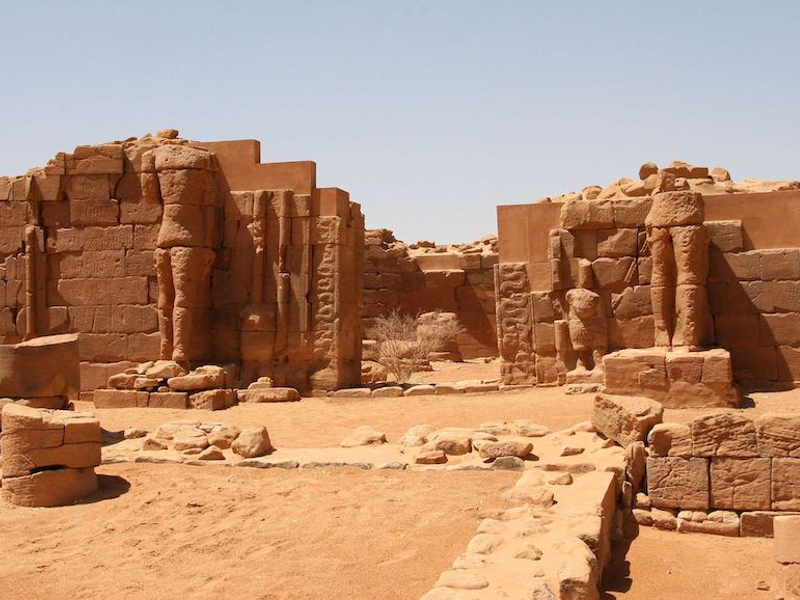Entrance to the Great Enclosure of Musawwarat es-Sufra, a temple dating back to 3rd century BC, in modern day Sudan. Source: Wikimedia Commons
Introduction
Egypt’s history is a tale of great civilizations, majestic pyramids, and pharaohs who ruled the land of the Nile for millennia. However, Egypt’s story is incomplete without acknowledging the significant contributions of its southern neighbor, Nubia. The Nubian people, who inhabited the region south of Egypt, profoundly influenced Egyptian history and society.
This article will explore the rich Nubian contributions to Egyptian culture, religion, art, and trade.
Nubia: The Southern Gateway
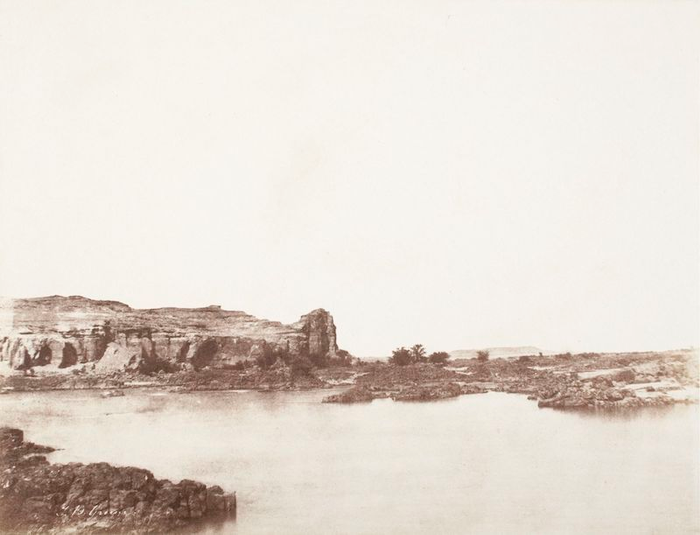
Second cataract of the Nile in 1854, which is submerged under Lake Nasser present day. Source: Wikimedia Commons
In the heart of northeastern Africa lies the Nubia region, characterized by its fertile soil and strategic location along the Nile River. Nubia served as the southern gateway to Egypt for millennia, fostering a dynamic exchange of ideas, technologies, and traditions. It was a cultural crossroads where the currents of Nubian and Egyptian civilizations converged.
Trade

Nubian ivory bracelets on display at the Oriental Institute Museum, University of Chicago,. Source: Wikimedia Commons
To appreciate the Nubian impact on Egypt, we must first delve into the realm of trade. The ancient Nubians were adept traders, facilitating the flow of goods such as gold, ivory, ebony, and exotic animals into the Egyptian kingdom. This economic symbiosis enriched both regions and forged enduring ties that transcended the mercantile realm.
Nubian Dynasties: Rulers Beyond the Cataracts

Nubian Pharaohs and Kings left to right: Tanotamun, Taharqa (rear), Senkamanisken, again Tanotamun (rear), Aspelta, Anlamani, again Senkamanisken. Found in 2003 by swiss archaeologist Charles Bonnet in a cahe in Dukki Gel. Source: Wikimedia Commons
The Nile River, with its cataracts and bends, delineated geographical boundaries and political and cultural spheres. With its kingdoms and societies, Nubia saw the rise of powerful dynasties that left an indelible mark on Egypt. The most notable of these was the Kingdom of Kush, whose rulers extended their influence northward and sat on the throne of the pharaohs.
During the 25th Dynasty (c. 747–656 BCE), the Nubian kings conquered Egypt and ushered in a period of cultural flourishing. The Kushite pharaohs, often called the “Black Pharaohs,” erected magnificent temples, revitalized religious practices, and contributed to the grandeur of the Egyptian civilization.
Religious Syncretism: A Pantheon of Unity
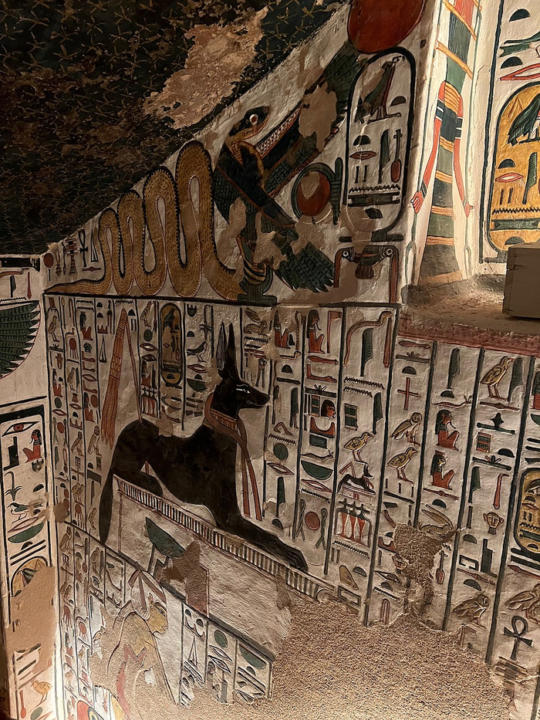
The diety Wadjet depicted as a snake with wings, above the dog-like diety Anubis. Relief located in Tomb of Nefetari. Source: Wikimedia Commons
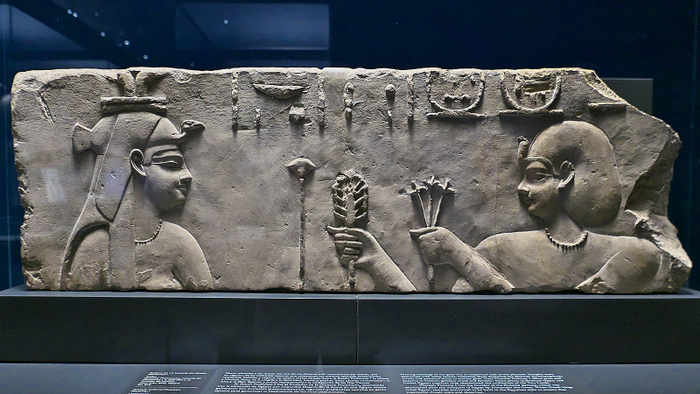
Relief of the diety Hathor (left) in the Temple of Hathor. To the right is King Ptolemy I presenting papyrus and heraldic plants. Source: Wikimedia Commons
Religion, the bedrock of ancient Egyptian society, also witnessed the amalgamation of Nubian and Egyptian beliefs. The Nubian pantheon seamlessly intertwined with the Egyptian gods, creating a religious tapestry celebrating diversity. The goddesses Wadjet and Hathor, revered in Nubian and Egyptian traditions, symbolize the syncretic nature of spiritual practices along the Nile.
Nubian Influence on Art and Architecture
The artistic landscape of ancient Egypt bore the brushstrokes of Nubian creativity. Nubian artisans and craftsmen played a pivotal role in shaping the aesthetic identity of the Nile Valley. The distinct Nubian artistic style, characterized by intricate jewelry, vibrant pottery, and distinctive pottery, left an indelible imprint on the visual heritage of Egypt.
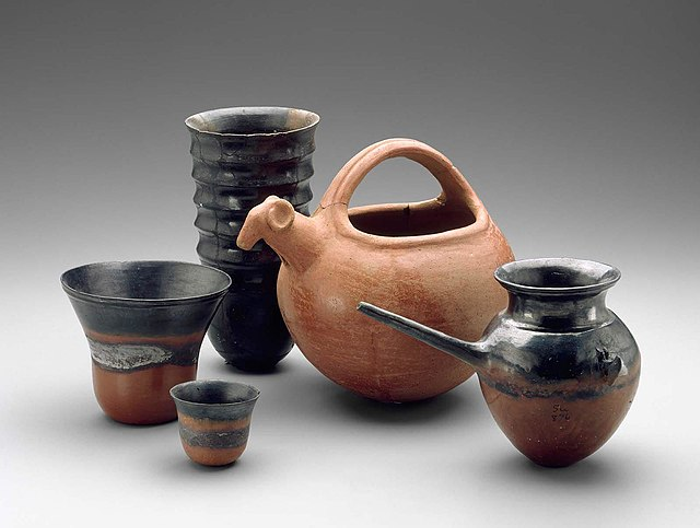
Nubian pottery dating to the classic Kerma period. Source: Wikimedia Commons
The influence of Nubian artisans is most evident in the jewelry discovered in the tomb of Tutankhamun. Intricately crafted necklaces, bracelets, and pendants adorned with gold and precious stones bear the unmistakable hallmarks of Nubian design. This cross-cultural exchange embellished the pharaoh’s burial and showcased the collaborative spirit that defined the region.
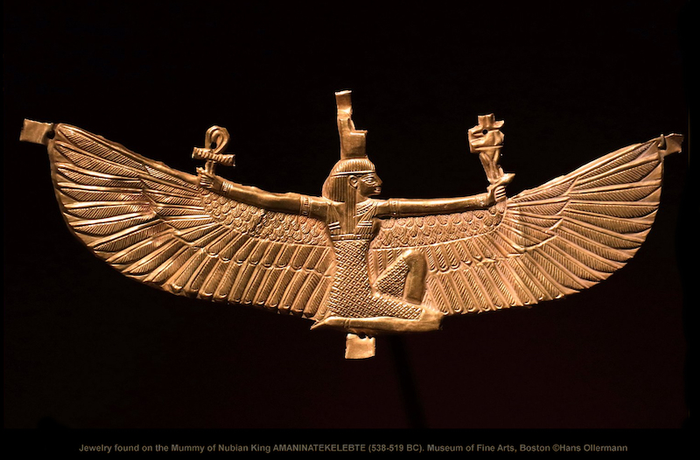
Jewelry found on the Mummy of Nubian King Amaninatekelebte (538-519 BC). Museum of Fine Arts, Boston. Source: Wikimedia Commons
The Nubian Legacy: Beyond Borders
As the annals of time unfurl, it becomes evident that the Nubian contributions to Egyptian history and society are not confined to a bygone era. Contemporary Nubian communities, though often marginalized, continue to uphold their rich heritage. The Nubian language, traditions, and rituals echo through the corridors of time, reminding us of the enduring legacy that transcends political boundaries.
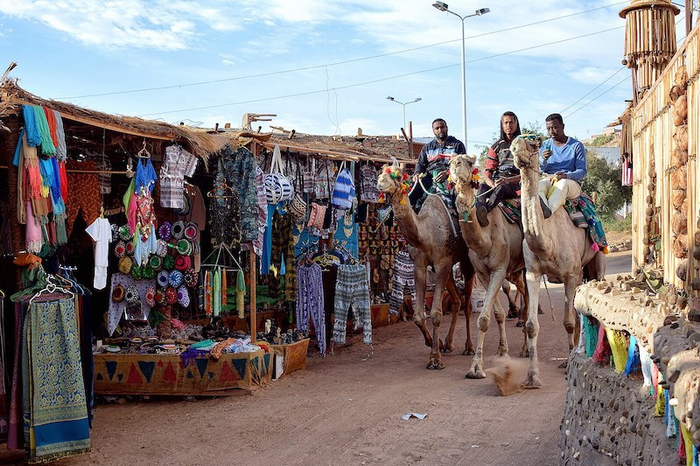
Camel riders in the streets in Nubia, now part of modern day Egypt. Source: Wikimedia Commons
Conclusion
The story of Nubian contributions to Egyptian history and society is a narrative of unity in diversity. It is a tale of cultural symbiosis that defies the limitations of time and space. As we navigate the archaeological landscapes and decode the hieroglyphs, let us not overlook the vibrant thread of Nubian influence that weaves through the grand narrative of ancient Egypt. The Nubians, with their trade networks, dynasties, religious syncretism, and artistic prowess, have left an indelible mark on the Nile Valley, reminding us that history’s true beauty lies in its contributors’ diversity.

Anand Subramanian is a freelance photographer and content writer based out of Tamil Nadu, India. Having a background in Engineering always made him curious about life on the other side of the spectrum. He leapt forward towards the Photography life and never looked back. Specializing in Documentary and Portrait photography gave him an up-close and personal view into the complexities of human beings and those experiences helped him branch out from visual to words. Today he is mentoring passionate photographers and writing about the different dimensions of the art world.

